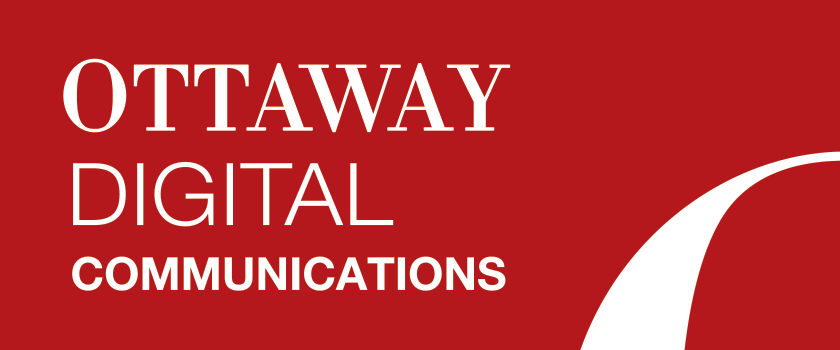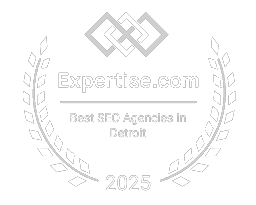On-Page SEO

What is on-page SEO? – On-page SEO is the process of optimizing web pages to help them rank higher on search engines like Google and Bing. The end goal? To help increase the flow of organic traffic to one’s site.
What is being “optimized”? – There are various components to optimize including, content, site architecture and HTML. Later, we’ll break down twelve components, what they are and best practices to optimize each of them.
Why is on-page SEO important? – On-page SEO is important because it lets Google bots crawl your site and understand the value it could offer to potential customers. Additionally, the content itself is filled with valuable information to those looking for information about your services.
On-Page SEO Factors
Taking the time to optimize each of the following on-page SEO factors will help your rankings on SERPs and can make your site overall more difficult to compete with:
- Page URLs: The URL is a specific web address that Google reads and customers click to direct them to a specific landing page (generally the home page) of a particular site. We recommend following these best practices when optimizing the URL address:
- The simpler/shorter, the better
- Separate words with dashes (e.g. ottawaydigital.com/digital-marketing/)
- Include keyword within URL
- Don’t use numbers or special characters
- Title Tags: Your title tag is your website’s page title, but it only appears in search results. This factor should be optimized using the targeted keyword so that it’s easier for the search engine crawl bot to understand your site/page.
- Meta Descriptions: The meta description is a summary of your site/page and is also included in search results. While the meta description doesn’t influence your on-page optimization directly, Google may sometimes bold specific words to help users find their searched term.
- Structured Markup: Structured markup is a format to “mark up” your web page’s code so search engines can understand it better. Regarding SERPs, structured markup improves user experience and click-through rate.
- Heading Tags: These are generally categorized as <h1>, <h2>, <h3>, etc. These tags help organize the content for your readers and help search engine crawl bots distinguish relevant and important content depending on the searcher’s intent. It’s important to place your targeted keyword within <h1> and <h2> headers.
- Image Alt Tags: The alt text (or tags) for your photos tell the Google search bots what your images are about because Google provides just as many image-based results as it does text-based ones. This means the user may be discovering your business via images, so keep a few things in mind:
- Make your alt tag descriptive and specific
- Make it relevant to the broader topic of the content
- Use no more than 125 characters
- Do not keyword stuff; sprinkle in one or two
- Target Keywords: Using keyword research tools like SEMrush, an SEO specialist can further understand the keywords people use to search for your related product or service(s). Helpful metrics to determine the usefulness of the keyword include monthly search volume and competition. Depending on your business, SEO campaigns can use two different types of keywords:
- Long tailed: Three to four words
- Medium tailed: Two to three words
- Unique and Valuable Content: This will provide informative material relevant to your vertical. This information will help twofold: (1) the user will find what they’ve been looking for, and (2) search bots understand the context of what was written. When content is being written, follow these five guidelines:
-
- Use your keyword(s) in headings and paragraphs
- Content must be “skimmable”
- Break up your content with media (images, videos, etc.)
- Use proper spelling and grammar
- Ensure your content is verified and reliable
-
- Site Speed: Page speed is a ranking factor because, in this day and age, instant satisfaction is all anyone wants. If someone is waiting more than 3 seconds for a page to load, they’re likely to move on. Google collects the data from those that move on and rank your page/site accordingly. To test your page’s speed, you can use the PageSpeed Insights from Google to receive tips and hints on how to improve the speed.
- Internal Linking: Hyperlink relevant words or phrases on your page to other pages across your site. This is important for on-page SEO because internal links keep customers on your site much longer. The longer they stay, the more time the search bots have to crawl and index your site, thus leading to a potential change in rank.
- Image Optimization: Oversized media can slow down a site. Ensure you’re compressing your images, so your ranking isn’t negatively affected. As we mentioned earlier, don’t forget to add alt text to your images to help search bots pull your images in their SERPs.
- Mobile Friendliness: More than 50% of internet traffic comes from mobile devices. Thus, how a visitor interacts with your site on their smart device can affect your ranking. If your site isn’t optimized for mobile users, you’ll miss out on valuable traffic.
On-Page vs Off-Page SEO
On-page SEO handles the technical side of things such as site speed, internal linking and structured markup, while off-page SEO refers to ranking factors outside the website, such as:
- Backlinks: Backlinks are one of the most important SEO ranking factors you need to be paying attention to if you want to grow your website’s traffic from Google.
- Domain Strength: Measures how authoritative your site is according to search engines.
- Social Sharing: Share content more frequently to look more relevant to search engines.
- Content Distribution: Every public share impacts your ranking. Share your content within relevant forums, websites and other online communities.
It’s not about on-page SEO or off-page SEO being better than the other, it’s how you use them together. A sound SEO strategy will implement both on-page and off-page SEO tactics to give your website the best chance at ranking higher in SERPs.
Black Hat Techniques To Avoid
Google receives trillions of searches per year, so it’s become a dog-eat-dog world out there for SEO specialists looking to jump on first page. An effective SEO strategy that doesn’t use the following black-hat techniques will serve you well in avoiding getting flagged from Google, which can negatively affect your search rankings.
- Buying links: Links should be earned, not bought. Your backlinking strategy should work on attracting organic links, because Google discredits sponsored content and gives “rank juice” to other more informative content.
- Duplicate content: Google algorithms can detect duplicate content, so be sure to publish unique and valuable material instead of republishing other content.
- Cloaking: The ol’ virtual “bait ‘n’ switch” is often a tactic used to mislead visitors by giving their content a different title than what the content says. This can result in a penalty to your ranking, thus severely worsening your chances to show on page 1 or 2 on a search engine’s SERPs.
- Keyword stuffing: Throwing a keyword multiple times within content is no longer an effective SEO strategy. This reads like spam to the search engine bots and the visitor. Don’t get caught up in saturating your content with keywords; otherwise, you’re likely to get penalized by Google.
- Auto-generated content: This type of content uses programming to automatically generate content to manipulate a website’s ranking. Unfortunately, the content itself suffers and is unable to produce relevant information. Thus Google ranks the site lower.
Did This Guide To An Effective On-Page SEO Strategy Help? Let Us Know!
Hopefully, you’ve found the tips, tricks and tactics throughout this article helpful in developing your own SEO marketing strategy.
Was there a factor you didn’t know could be optimized? Did the article illuminate how you can optimize a factor you didn’t know how to improve?
Let us know by leaving a comment on our Facebook page or reaching out to us today.
Onward and upward!



